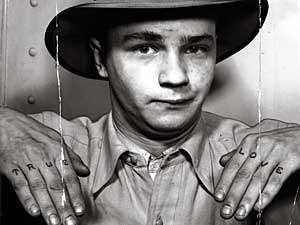|
Audio
Photos
Resources
Respond to this story
|
How a camera changed photojournalism
December 10, 2004
St. Paul, Minn. — The photos are graphic and captivating. Former St. Paul Pioneer Press reporter Larry Millet has unearthed more than 200 images of car accidents, murders and suicides for his book, "Strange Days, Dangerous Nights."
 | |||
The Minnesota Historical Society used 81 of the photos from the book as the focal point for a new exhibit which opens Dec. 10, 2004, at the History Center.
The photos were taken during the Speed Graphic era. For three decades, starting in the 1930s and ending in the '50s, the Speed Graphic camera was synonymous with photojournalism. The Speed Graphic was lightweight and incredibly durable -– and it could produce stunning images.
Press photographers of the day, driven by the desire to fill newspaper pages with sensational images, shot everything, day and night. They used the Speed Graphic camera to help create a new visual style that was powerful, immediate, and often disturbing.
MPR's Greta Cunningham talked with author Larry Millett about the book and this era of photojournalism. To listen to their interview, choose the audio link in the right column.
|
News Headlines
|
Related Subjects
|

